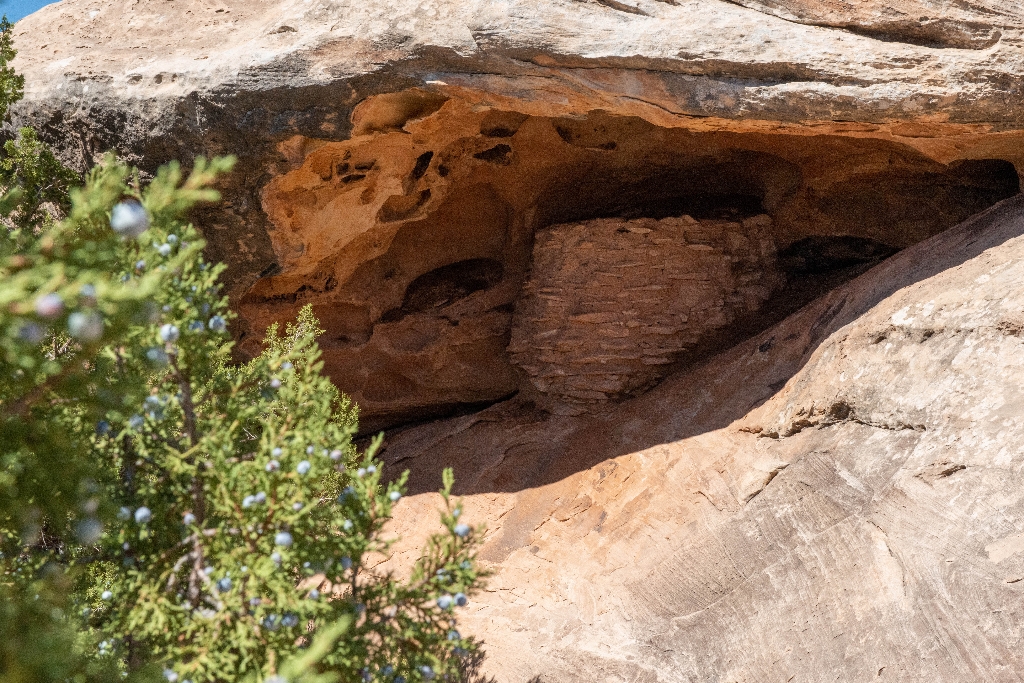
Visit one of the best preserved ancient structures in the park, built perhaps over a thousand years ago. Along the short trail (0.3 mile (0.5 km) loop) you will see native plants which people used to meet their daily needs. They will help acquaint you with the way of life of the early inhabitants of this area.
- Roundtrip Distance: 0.3 mi (0.5 km)
- Time: 20 min
- Elevation Change: 11 ft (3 m)
- Difficulty: Short/Easy
- Hike Description: A short trail leads to a storage structure built by Indigenous people. Entering, touching, or climbing on archeological sites is strictly prohibited. View structures from a distance to protect fragile walls.
- Accessibility: This trail can be rough, uneven, and requires walking up and down a rocky hill and stone steps. It is not accessible to wheelchairs. In winter, there may be snow or icy conditions; we recommend traction devices for hikers.
- Dogs are not allowed on this trail. Service animals are allowed in national parks. What is a service animal?
Who lived here?
Around 950 CE (Common Era), ancestral Puebloan populations around Mesa Verde and Fremont communities to the north were growing. Emigration into the Canyonlands area increased. Both groups were farmers, seeking locations that provided water, arable land, building sites, and a variety of wild plants. One of those productive locations was the nearby Salt Creek drainage.
The ancestral Puebloans practiced full-time farming, but the Fremont split their time between farming and foraging. They raised corn, beans, squash, and cotton and gathered seeds, roots, and fruits. They also hunted deer and bighorn sheep and trapped or snared small animals and birds.
Climate change and regional droughts in the late 1200s made farming difficult. By the end of the century most farmers had emigrated south to what is now New Mexico and Arizona. They joined other groups that would become the Hopi and Zuni tribes. Others stayed and adapted to the colder climate by relying on wild plant gathering. These groups would become local Ute and Paiute tribes.
Is there something we missed for this itinerary?
Itineraries across USA


















































